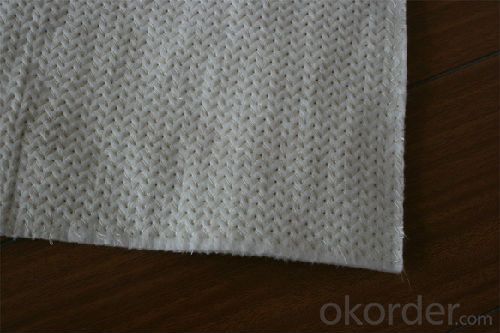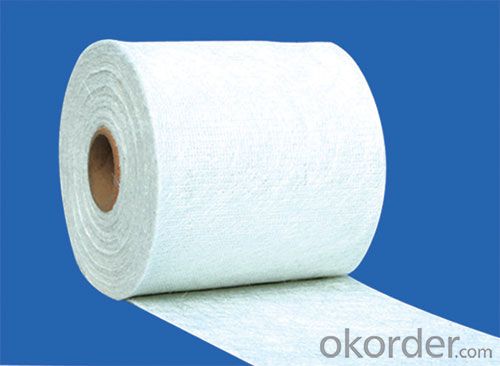Fiberglass Biaxial Stitched Combo Mat For Boat Manufacturing
- Loading Port:
- Shanghai
- Payment Terms:
- TT or LC
- Min Order Qty:
- 20000 kg
- Supply Capability:
- 20000 kg/month
OKorder Service Pledge
OKorder Financial Service
You Might Also Like
1.Brief Introduction
E-glass stitched combo mat consists of two or more layers of fiberglass roving which are stitch-bonded.One layer of rovings and different layers of roving can be oriented differently and have different liner density.The roving specification,number of roving layers,mat width and roll diameter can be customized as per requirement.
Multi-axial series: At most 4 layers of roving can be stitched;however a layer of chopped strands(0g/㎡-500g/㎡)or composite materials can be added.The maximal width can be too inched.This product is used in blades of wind power turbines,boat manufacturing and sports devices.
2.Product Features

3.Product Specifications
Product no. | Overall Density | .+45°Roving Density | .-45°Roving Density | Chop Density | Polyester Yarn Density |
(g/m2) | (g/m2) | (g/m2) | (g/m2) | (g/m2) | |
E-BX300 | 306.01 | 150.33 | 150.33 | - | 5.35 |
E-BX450 | 456.33 | 225.49 | 225.49 | - | 5.35 |
E-BX600 | 606.67 | 300.66 | 300.66 | - | 5.35 |
E-BX800 | 807.11 | 400.88 | 400.88 | - | 5.35 |
E-BX1200 | 1207.95 | 601.3 | 601.3 | - | 5.35 |
E-BXM450/225 | 681.33 | 225.49 | 225.49 | 225 | 5.35 |
E-BXM600/225 | 830.75 | 300.2 | 300.2 | 225 | 5.35 |
E-BXM600/300 | 905.75 | 300.2 | 300.2 | 300 | 5.35 |
Special specification can be produce according to customer requirements.

4.FAQ
Packaging:
Each roll is wound onto a paper tube which has an inside diameter of 76mm and the roll has a diameter of 275mm. The roll is wrapped up with plastic film,and then packed in a cardboard box or wrapped up with kraft paper. The rolls can be horizontally placed. For transportation, the rolls can be loaded into a cantainer directly or on pallets.
Storage:
Unless otherwise specified, It should be stored in a dry, cool and rain-proof area. It is recommended that the room temperature and humidity should be always maintained at 15℃~35℃ and 35%~65% respectively.
- Q:What is the cost of fiberglass mat tissue?
- The price of fiberglass mat tissue can fluctuate based on a variety of factors including the brand, quality, quantity, and location. Typically, the cost per square foot for fiberglass mat tissue falls between $0.50 and $2. However, it is crucial to consider that prices may vary depending on the project's specific requirements and the supplier or retailer from whom it is obtained. To ensure the best value and appropriateness for your needs, it is advisable to conduct thorough research and compare prices from different sources.
- Q:How does the surface finish of fiberglass mat tissue affect its adhesion to resin?
- The adhesion of resin to fiberglass mat tissue can be significantly influenced by its surface finish. The surface finish pertains to the texture or smoothness of the fiberglass mat tissue. In general, a rough surface finish tends to promote better adhesion to resin. This is because a rough surface provides a larger area for the resin to adhere to, resulting in a stronger bond. Rough surface finishes can be achieved through different manufacturing techniques, such as using coarser fibers or incorporating texturizing agents during production. On the contrary, a smoother surface finish may lead to weaker adhesion. A smooth surface does not offer as much area for the resin to bond with, resulting in a weaker and less durable bond. Smoother surface finishes can be attained by using finer fibers or through additional processing steps to smoothen the surface. When selecting the surface finish of fiberglass mat tissue, it is crucial to consider the specific application and requirements. For applications that necessitate high strength and durability, a rougher surface finish may be preferable to ensure optimal adhesion to the resin. Conversely, for applications where a weaker bond is acceptable or where a smoother surface finish is desired for aesthetic reasons, a smoother surface finish may be chosen. Ultimately, the surface finish of fiberglass mat tissue plays a vital role in determining the adhesion to resin. It is essential to choose the appropriate surface finish to achieve the desired strength, durability, and performance in various applications.
- Q:What is the moisture absorption rate of fiberglass mat tissue?
- The moisture absorption rate of fiberglass mat tissue can vary depending on various factors such as the specific type of fiberglass mat tissue and its manufacturing process. However, in general, fiberglass mat tissue is known to have a relatively low moisture absorption rate. This is due to the hydrophobic nature of fiberglass, which means it repels water and is not easily permeated by moisture. As a result, fiberglass mat tissue is often used in applications where moisture resistance is important, such as in roofing materials, insulation, and automotive parts. While the exact moisture absorption rate may not be readily available without specific product information, fiberglass mat tissue is generally considered to be a moisture-resistant material.
- Q:What is fiberglass mat tissue made of?
- Fine strands of glass fibers are used to create fiberglass mat tissue, which is a flexible material resembling fabric. The glass fibers are usually produced by melting glass and transforming it into thin filaments. These filaments are then coated with a binding agent to enhance their strength and durability. The woven composition of the fiberglass mat tissue contributes to its ability to reinforce and stabilize different materials and products. This makes it a suitable option for insulation, roofing, and composite materials.
- Q:Does anyone know the hardness value of the heat conductive gasket? Does it contain the hardness of the carrier (glass fiber)?
- SHORE hardness is only for the hardness of the heat conductive gasket itself
- Q:Can fiberglass mat tissue be used for repairing fiberglass surfboards?
- Repairing fiberglass surfboards can be accomplished using fiberglass mat tissue. This material is commonly utilized for reinforcing and fixing fiberglass structures, such as surfboards. Its lightweight nature, flexibility, and ease of use make it the perfect choice for patching up any cracks or holes in a surfboard's fiberglass shell. To bond the mat tissue to the surfboard's surface, epoxy resin is typically applied, resulting in a robust and long-lasting repair. Nonetheless, it is crucial to acknowledge that the success of the repair depends on the skill and technique of the individual performing it. If you lack experience in surfboard repairs, it is highly recommended to seek professional assistance or guidance.
- Q:How is fiberglass mat tissue made?
- Fiberglass mat tissue is made by combining thin strands of glass fibers with a binder material, such as polyester or acrylic, to form a non-woven fabric. These glass fibers are typically manufactured through a process called pultrusion, where molten glass is pulled through tiny openings to create continuous filaments. The filaments are then chopped into shorter lengths and dispersed randomly onto a moving conveyor belt. As the fibers move along the conveyor, the binder material is sprayed onto them to ensure adhesion and form a cohesive mat. The mat is then heated to cure the binder and solidify the structure, resulting in a strong and flexible fiberglass mat tissue.
- Q:Can fiberglass mat tissue be used for pipe wrapping?
- Yes, fiberglass mat tissue can be used for pipe wrapping. It provides excellent insulation, strength, and corrosion resistance, making it a suitable material for protecting pipes from external elements and preventing leakage.
- Q:Does fiberglass mat tissue provide any thermal insulation?
- Yes, fiberglass mat tissue does provide thermal insulation. Fiberglass is a poor conductor of heat, which means it does not transfer heat easily. When used as a mat tissue, it helps to trap air within its fibers, creating a layer of insulation. This insulation layer acts as a barrier, preventing heat transfer through conduction and reducing thermal energy loss. Therefore, fiberglass mat tissue can be an effective solution for providing thermal insulation in various applications, such as construction, automotive, and aerospace industries.
- Q:Is fiberglass mat tissue suitable for railway infrastructure?
- Yes, fiberglass mat tissue is suitable for railway infrastructure. It is a versatile material that offers excellent mechanical strength, durability, and corrosion resistance. It can be used for various applications in railway infrastructure, including reinforcement of concrete structures, insulation, and protection against fire hazards. Additionally, fiberglass mat tissue is lightweight and easy to install, making it a cost-effective choice for railway projects.
1. Manufacturer Overview |
|
|---|---|
| Location | |
| Year Established | |
| Annual Output Value | |
| Main Markets | |
| Company Certifications | |
2. Manufacturer Certificates |
|
|---|---|
| a) Certification Name | |
| Range | |
| Reference | |
| Validity Period | |
3. Manufacturer Capability |
|
|---|---|
| a)Trade Capacity | |
| Nearest Port | |
| Export Percentage | |
| No.of Employees in Trade Department | |
| Language Spoken: | |
| b)Factory Information | |
| Factory Size: | |
| No. of Production Lines | |
| Contract Manufacturing | |
| Product Price Range | |
Send your message to us
Fiberglass Biaxial Stitched Combo Mat For Boat Manufacturing
- Loading Port:
- Shanghai
- Payment Terms:
- TT or LC
- Min Order Qty:
- 20000 kg
- Supply Capability:
- 20000 kg/month
OKorder Service Pledge
OKorder Financial Service
Similar products
New products
Hot products
Hot Searches
Related keywords































